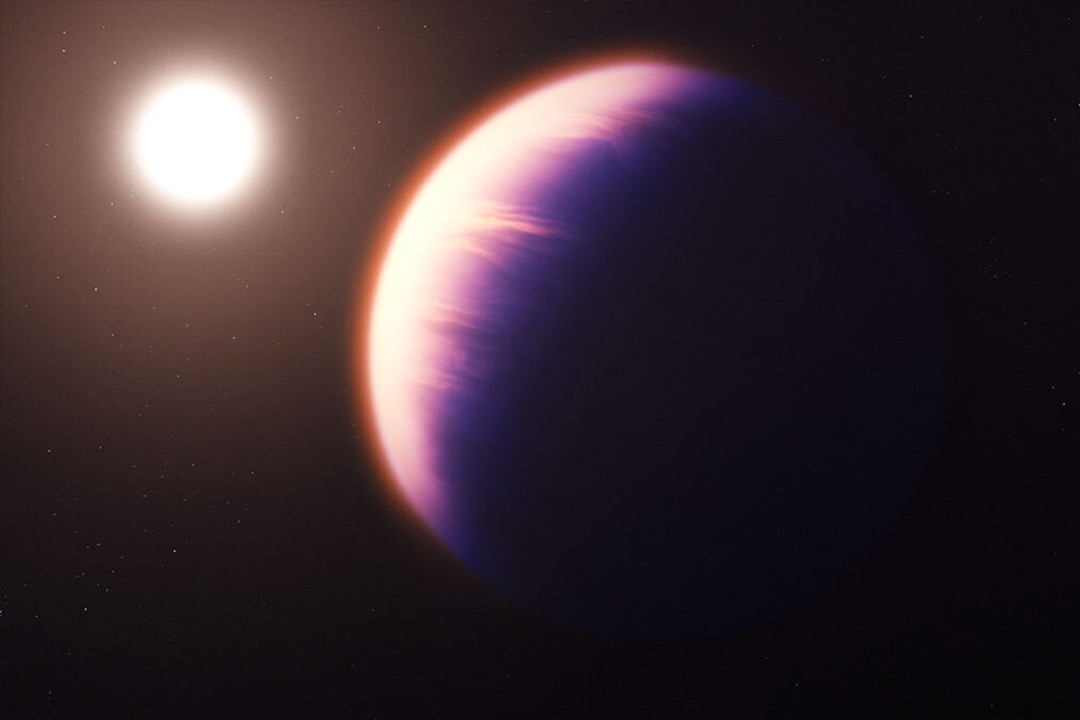Create a free profile to get unlimited access to exclusive videos, sweepstakes, and more!
James Webb Space Telescope reveals toxic atmosphere of exoplanet 700 lightyears away
It sounds awful, honestly.

From Pitch Black to The Chronicles of Riddick (now streaming on Peacock!), Richard B. Riddick gets himself into and out of scrapes thanks to his unique way of seeing the world. There’s some inconsistency in the lore about whether his eyes are an innate characteristic or the result of a black market surgical operation, but the bottom line is that Riddick can see things the rest of us can’t.
That’s the sort of talent that is useful to astronomers who often need to observe distant objects in wavelengths of light our eyes can’t detect. Luckily, over the last few centuries, and especially over the last few decades, scientists have crafted some incredible telescopes that allow us to see the universe a little more clearly. Among the most impressive, and the most recent, is the James Webb Space Telescope which has already given us stunning images ranging from our nearby planetary neighbors to the distant reaches of the observable universe.
Now the JWST has turned its incredibly powerful eye on an exoplanet for the first time. WASP-39b is a gas giant about the mass of Saturn but slightly larger in diameter than Jupiter. We mostly think of gas giants as being distant from their stars, but that isn’t the case here. WASP-39b orbits only about 0.0486 AU — the average distance from the Earth to the Sun — or about 4.5 miles from the star. For comparison, Earth orbits at a comfortable 93 million miles, and even Mercury keeps 29 million miles between it and the Sun. This one is big, it’s close, and it’s hot.
The exoplanet was first discovered in 2011, thanks to the transmit method of detection, wherein a planet passes in front of its parent star and blocks some of its light. Astronomers were able to detect that dip in light and confirm the presence of a planet, but they couldn’t get a lot of detail about the world itself. That’s where the JWST comes in.
When astronomers turned the powerful infrared telescope on WASP-39b, 700 light years away, they uncovered the presence of a complex molecular soup in the planet’s atmosphere. To make their observations, they waited for the planet to transit in front of its star again. When it did, light from the star filtered through the planet’s atmosphere at the edges. Once inside the atmosphere, light interacts with the chemicals it encounters. Things get bounced around and filtered, and the light that comes out the other side and eventually reaches the telescope’s receptors gets changed. It carries a signature from the atmosphere’s chemical composition. It’s the same sort of thing that happens during a sunset, as light bends through the atmosphere and interacts with particles to create stunning yet temporary landscapes.
Chemical compounds each have a unique spectral light signature which scientists can use to decode the composition of a planet’s atmosphere, even hundreds of light years away. “This is the first time we have seen evidence of photochemistry — chemical reactions initiated by energetic stellar light — on exoplanets. I see this as a really promising outlook for advancing our understanding of exoplanet atmospheres with [this mission],” Shang-Min Tsai, a researcher at the University of Oxford, said in a statement.
The JWST’s observations have revealed the presence of carbon dioxide, water, sulfur dioxide, carbon monoxide, sodium, and potassium, all swirling together in a scalding atmospheric soup. The findings teach astronomers, and the rest of us, about how planets are made and how they interact with their host stars, especially in these extremely close relationships. It can also help us refine our estimates of the relative abundance of chemical elements in the protoplanetary disk where the planet formed.
For WASP-39b, the atmospheric composition hints at a tragic story unfolding over eons. Because of the relative mixture of molecules detected there, astronomers believe that WASP-39b began as several protoplanets, which were all smashed together or otherwise merged until we were left with one massive gas giant. That planet might have originally started much farther away from the star before migrating in toward the center of the system. Today, it’s a toxic and fire-blasted hell we wouldn’t want to visit, but it sure is pretty to look at.


























